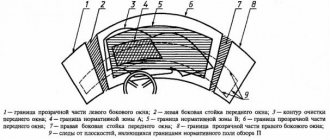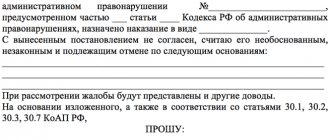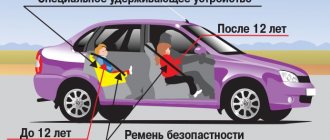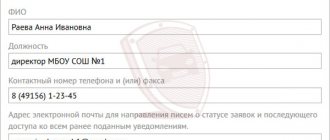Structure of ADR
The rules of the document regulate many issues when transporting dangerous goods:
- installed danger signs;
- choosing a suitable container for transportation;
- mandatory labeling of these containers;
- requirements for vehicle equipment.
It is important to refer to this provision in time in order to be able to prepare a package of documents and transport in full compliance with current requirements (for example, the 2015 rules).
The ADR ADR regulation includes 2 appendices – “A” and “B”, consisting of nine detailed chapters. Appendix A contains general rules regarding the properties of the substances themselves:
- General provisions (decoding, general definitions);
- Classification of substances allowed for transportation;
- Features of transportation of certain materials and special restrictions;
- Requirements for containers for transportation;
- Features of the transportation registration process;
- List of requirements for containers for transportation;
- Recommendations for the conditions that must be observed during transportation, loading and unloading, and acceptance of materials.
Appendix “B” discusses the basic requirements for the actions of the carrier company and the equipment used:
- Recommendations for drivers and escorts.
- Vehicle requirements.
Violation of the rules threatens significant fines for the customer and the contractor.
ADR divides the threats that a transported substance can cause into several types:
- Oxidation (causes fire).
- Capable of explosions.
- Easy - or self-igniting.
- Corrosiveness.
- Virulence.
- Radioactivity.
The classes of dangerous goods according to ADR are as follows:
- explosive materials;
- gases;
- flammable liquids;
- radioactive substances;
- materials subject to corrosion;
- other hazardous substances.
ADR - what is it?
ADR is a global agreement created with the assistance of the UN, which is a set of traffic rules for the transport of high-risk goods. The states that signed this agreement assumed obligations to fulfill the developed conditions for the movement of special cargo across their own territory.
Dangerous goods are those that can cause damage:
- ecological situation;
- life and health of the population.
The agreement was accepted by all EU countries, Russia, and a number of Asian and African states.
Basic requirements for the transportation of dangerous goods
The set of regulations that establishes the rules of transportation and ratified by the countries participating in the agreement is a composite document that consists of the agreement itself and two annexes.
The first appendix classifies a list of potentially dangerous substances, objects and other goods. Various adjustments and additions are regularly made to this list.
The second annex is a set of technical requirements for vehicles intended for the transport of dangerous goods.
Of course, this documentation is quite extensive, so it is divided into nine more subsections: the first consists of seven, the second - of two. The structure of these annexes is a set of chapters and paragraphs and fully complies with the standards for drawing up international protocols.
The ADR agreement, which establishes standards for the transport of dangerous goods, is mandatory within all states that have signed this document. It is important to add that any country that is a member of the UN has the right to establish additional conditions for the transportation of especially dangerous goods on its territory, coupled with those already in the ADR agreement.
Rules for transporting dangerous goods in Russia
In the Russian Federation, the basic requirement is that the driver has an ADR certificate that meets all generally accepted standards. Under the settlement, there are nine classes of different high-risk cargo. Transportation of each type of these parcels requires the presence of an ADR certificate of the corresponding class.
Also in Russia, in addition to the basic global requirements, there are a number of additional rules governing the transportation of dangerous goods. Mandatory temporary instructions regulating the sequence of use of various vehicles.
Driver's permit
ADR is often used in a slightly different context, meaning an ADR certificate. In essence, an ADR certificate allows the driver to transport substances within the territory of the state that have a special level of threat. This is truly a necessary document for the legal functioning of many transport companies.
Drivers, as a rule, first of all research the question, where to get ADR? First you need to complete a specialized training course according to a specially prepared program. You can obtain an ADR certificate only by first completing a basic course and successfully passing the necessary exams.
The document can be made for a period of five years. Before 2013, this could have been done within one day. However, the one-day training was completely ineffective, so now, in order to obtain an ADR certificate for the transport of dangerous goods, it is necessary to undergo five days of training and pass exams.
Dangerous cargo - what does it mean?
Explanation of ADR - Road Transport of Dangerous Goods. Dangerous goods are a special category of goods that require maximum attention and compliance with all transportation rules. Such cargo can be understood as any cargo that can harm human health and life and the environment, since the cargo has certain dangerous properties. Simply put, it is the same cargo, but it is capable of harming living organisms and the environment to one degree or another, and this makes it dangerous.
Types of dangerous goods
Dangerous goods are divided into classes, of which there are 9 in total. Each class is also divided into subclasses:
- Explosives and substances.
- Gases.
- Liquids that may ignite easily.
- Solids that may spontaneously ignite.
- Oxidizing substances.
- Substances are toxic and infectious.
- Sources of radiation.
- Corrosive sources.
- Other dangerous sources.
Only these types of cargo are regulated in a special way, as they are dangerous and pose a threat to the environment. Of course, there are also subclasses and complete lists with the names of substances and materials, but there is no need to list them all here. The basic classification of dangerous goods will be sufficient.
Features of the transportation of dangerous goods on the territory of the Russian Federation
A mandatory condition for admission to driving vehicles with dangerous goods in Russia is the presence of an ADR certificate. This document is compiled in accordance with international standards and is recognized by ADR countries (European Union, Morocco, Kazakhstan, Azerbaijan, etc.).
In addition to ADR, Russian legislation requires internal documents:
- driver's license;
- insurance;
- technical inspection;
- admission of a vehicle to the movement of dangerous goods (this right is obtained from the state traffic inspectorate);
- medical certificate-admission;
- documents for the transported cargo (certificate, waybill, waybill, emergency card, safety passport).
Among the Russian regulations regulating dangerous transportation, the Temporary Instruction, dedicated specifically to cargo of different categories of danger, stands out.
ADR requirements for vehicles transporting dangerous goods
This article contains excerpts from ADR concerning the transport of dangerous goods in the territory of countries that have accepted this agreement.
5.3.2.1.1 ADR - Transport units carrying dangerous goods must have two vertical orange rectangular plates in accordance with the provisions of paragraph 5.3.2.2.1. One of these plates must be attached to the front and the other to the rear of the transport unit, both perpendicular to the longitudinal axis of the transport unit. They should be clearly visible. 5.3.2.2.2 ADR - The hazard identification number and UN number must be indelible and remain legible after exposure to fire for 15 minutes. (Explanation: this is why the numbers on the plate should be in relief, and not just pasted on from film). 5.3.2.1.2 ADR - If a hazard identification number is indicated in column 20 of Table A of Chapter 3.2, tank vehicles, battery vehicles or transport units with one or more tanks in which dangerous goods are transported must, in addition, have on their sides each tank, each tank compartment or each element of a battery vehicle, clearly visible orange plates identical to the plates prescribed in paragraph 5.3.2.1.1, located parallel to the longitudinal axis of the vehicle. These orange plates must display the hazard identification number and the UN number prescribed in columns 20 and 1 of Table A of Chapter 3.2, respectively, for each of the substances carried in the tank, tank compartment or battery vehicle element. In the case of MEMU, these requirements only apply to tanks with a capacity of more than 1000 liters and bulk containers. 5.3.2.1.3 ADR - Tank vehicles or transport units with one or more tanks carrying substances of UN No. 1202, 1203 or 1223 or aviation fuel classified as UN No. 1268 or 1863, but not carrying any other dangerous substance, It is not necessary to affix the orange plates prescribed in 5.3.2.1.2 if the plates affixed to the front and rear in accordance with 5.3.2.1.1 show the hazard identification number and the UN number prescribed for the most dangerous substance carried, i.e. for the substance with the lowest flash point. 5.3.2.1.6 In the case of transport units carrying only one dangerous substance, the orange plates prescribed in 5.3.2.1.2, 5.3.2.1.4 and 5.3.2.1.5 are optional, provided that the plates, affixed to the front and rear in accordance with 5.3.2.1.1, the hazard identification number and the UN number prescribed for that substance are indicated, respectively, in columns 20 and 1 of Table A of Chapter 3.2.
5.3.1.4.1 ADR - information boards must be placed on the outer surfaces of both sides and the rear of the tanker, including empty ones that have not been cleaned and degassed (clause 5.3.1.6.1). These placards must comply with the danger signs prescribed in column 5 and, if necessary, column 6 of Table A of Chapter 3.2 of ADR.
5.3.6 ADR - In the event that a tanker transports a substance hazardous to the environment, in addition to the indicated information boards, it must be marked with danger signs of a substance hazardous to the environment (Note: Gasoline and diesel fuel are substances hazardous to the environment - according to studies by the European Association for Health and the Environment CONCAWE). The provisions of Section 5.3.1 regarding placards shall apply mutatis mutandis to this sign.
8.1.4.1 and 8.1.4.5 ADR - Each transport unit must have at least two portable fire extinguishers for extinguishing fires of classes A, B and C, the minimum capacity of which is determined as follows: a) maximum permissible weight of the transport unit up to 3.5 tons - the capacity of one of the fire extinguishers is at least 2 kg, the total capacity is at least 4 kg of dry powder; b) the maximum permissible weight of a transport unit is more than 3.5 tons, but not more than 7.5 tons - the capacity of one of the fire extinguishers is at least 2 kg, the second - at least 6 kg of dry powder; c) the maximum permissible weight of a transport unit is more than 7.5 tons - the capacity of one of the fire extinguishers is at least 2 kg, the second is at least 6 kg, and the total capacity is at least 12 kg of dry powder.
Fire extinguishers must be installed on transport units in such a way that they are easily accessible to the vehicle crew at all times. Installation should be carried out in such a way that fire extinguishers are protected from exposure to weather conditions to avoid reducing their operational reliability
8.1.5.2 ADR - Each transport unit has two wheel chocks, and a transport unit with a maximum permissible mass of less than 3.5 tons has one. The dimensions of the wheel chocks must match
8.1.5.2 ADR - Each transport unit has two warning signs with their own support. According to the Rules for the Transportation of Dangerous Goods by Road, in the event of an accident, the driver is obliged to fence off the accident area with a “Danger” sign in front and behind the vehicle at a distance of 50 m.
Appendix No. 6 to the Technical Regulations on the safety of wheeled vehicles (approved by the Decree of the Government of the Russian Federation of September 10, 2009) contains additional requirements for special and specialized vehicles: 1.18.9. The tanker must have space for placing two “Danger” signs, a “Speed Limit” sign, a flashing red light or an emergency stop sign, a felt blanket, and a sand container weighing at least 25 kg. maximum vehicle weight and wheel diameter.
clause 8.1.5.2 ADR - Portable lighting devices used must not have metal surfaces that can lead to sparking.
clause 8.1.5.3 ADR - On each transport unit when transporting dangerous goods in packages bearing danger labels 3, 4.1, 4.3, 8 or 9, or on a transport unit with appropriate information panels.
You can get acquainted with ADR equipment in the relevant sections of our catalog!
ADR 2021
How to obtain an ADR certificate in 2021?
ADR is an acronym that stands for “road transport of dangerous goods”.
The “European Agreement concerning the International Carriage of Dangerous Goods by Road”, also known as ADR/ADR, was adopted in 1957 in Geneva (Switzerland). Its goal is to establish rules for the transportation of dangerous goods in all European countries using a special vehicle.
In the Russian Federation, such goods are transported in accordance with the rules for the transportation of dangerous goods by road. ADR is necessary for companies that work with dangerous goods, their transportation (transportation) and storage, as well as the production and disposal of substances harmful to human life and health, as well as the environment.
Obtaining a certificate is by no means a simple procedure; often this process can take up to several months.
When transporting dangerous goods, ADR regulates the following:
- Confirms that containers are recommended for transportation
- Regulates packaging labeling
- Regulates the requirements for vehicles that will transport dangerous goods.
ADR distinguishes nine classes of dangerous goods. Knowing the class of dangerous cargo, you can quickly determine the correct container for its transportation (and labeling), carry out the necessary tests, draw up documents, and instruct the crew.
The ADR certificate confirms the driver’s training to transport dangerous goods. To obtain a certificate, the driver must undergo special training and pass exams. In case of successful completion, the driver is issued a certificate of admission to the carriage of dangerous goods - ADR of international standard. The specialists who are responsible for transportation, accompanying the cargo, etc. are issued certificates in any form.
The training program includes the following sections:
- General course
- Special course for 1st grade
- Special course for 7th grade
- Transportation in tanks (main course)
- Class 2 dangerous goods in tanks (additional course)
- Class 3 dangerous goods in tanks (additional course)
- Dangerous goods of classes 5, 6, 7 and 8 in tanks (additional course)
The duration of training is 4 days, the exam is taken on the 5th day.
In the ADR certificate, only those classes that have been studied are opened, the rest are crossed out. The driver’s ADR certificate has two columns: “in a tank” and “except for tanks”
The certificate is valid for 5 years!
Main changes in ADR 2021:
- A new party to the European Agreement on the Carriage of Dangerous Goods by Road is Georgia.
- Dangerous cargo now includes vehicles that transport fuel in tanks or gases in their cylinders.
- The changes also affected the provisions on the transportation of various types of fuel in fuel tanks.
- The procedure for taking and taking exams has been changed to prevent forgery.
- Labeling requirements have changed, in particular for packages with lithium batteries.
Registration of an ADR permit for the transportation of dangerous goods:
The certificate is issued within one working day, the period is calculated from the moment of receipt and registration of the application and the necessary documents.
List of documents required to obtain permission:
- Statement
- Passport of a citizen of the Russian Federation or other identification document
There is no charge for obtaining an ADR permit, there is no state duty or other fees, i.e. obtaining and renewing the certificate is absolutely free.
The maximum validity period of the permit is 6 months (six months). The amount of fines for lack of permission is regulated by Article 12.212 of the Administrative Code.
Registration procedure:
Contacting the traffic police to submit documents à Providing a vehicle for inspection à Issuing a certificate of admission to transport dangerous goods
If the car owner has previously received a permit, then the second time he only needs to renew it.
What is an ADR certificate?
An ADR certificate is a document that allows the driver to transport dangerous goods. The presence of such a document is a requirement for drivers who intend to work in companies engaged in such transportation. In our country, this certificate has an international standard and is valid in countries where the ADR agreement has been concluded.
The certificate is a small card with the following information on both sides:
- Owner's full name;
- number;
- a country;
- a date indicating when the document expires;
- owner's personal signature;
- photo of the owner;
- the authority responsible for the control of the transport of dangerous goods is indicated;
- classes are indicated that the driver can transport either in a tank or not.
It is also worth noting that the data in the document also has a foreign translation, which may not only be English.
This certificate only says that the driver can transport dangerous goods and he knows how to handle them, but the certificate does not in any way replace a permit to transport dangerous goods by road.











